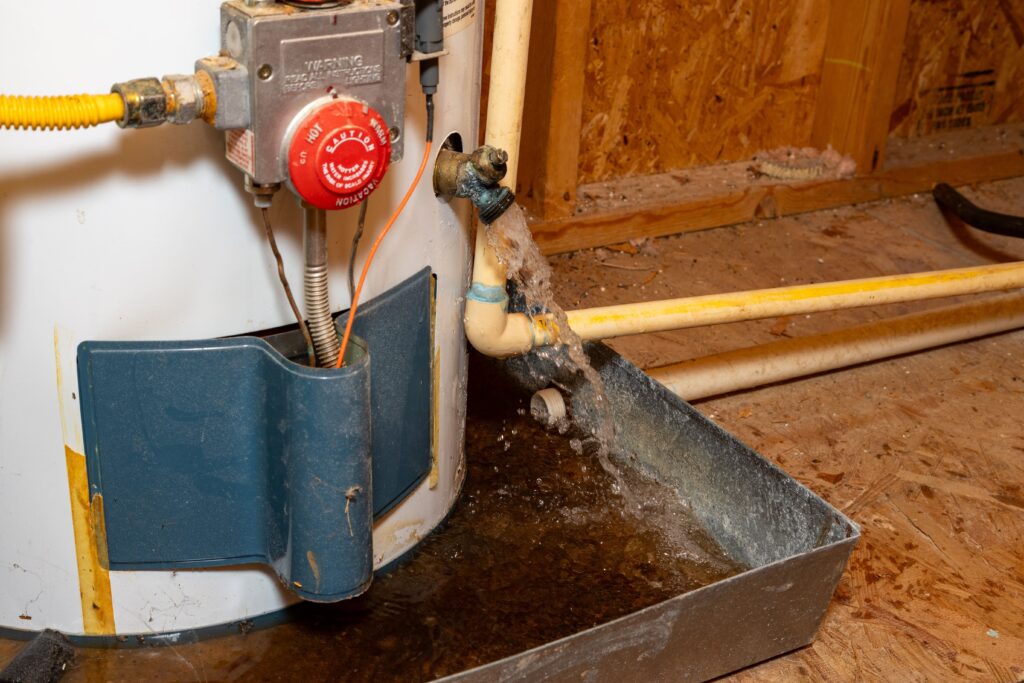A reliable water heater is essential for everyday comfort, whether it’s for a hot shower, clean dishes, or warm water for laundry. Over time, sediment builds up inside the tank, reducing efficiency, increasing energy costs, and leading to potential damage. Flushing the water heater regularly prevents these issues and ensures the system runs smoothly for years.
At H3 Plumbing & Drains, homeowners in Spartanburg, Boiling Springs, and Roebuck trust us to maintain and repair their plumbing systems. A simple flush can extend the life of a water heater and save money on energy bills.

Why Flushing Your Water Heater Is Necessary
Water heaters constantly fill with fresh water, and along with it, tiny minerals like calcium and magnesium enter the system. Over time, these minerals settle at the bottom of the tank, forming a thick layer of sediment.
When sediment accumulates, it creates several problems:
1. Reduced Heating Efficiency
Sediment buildup creates a barrier between the water and the heating element. This forces the system to work harder and use more energy to heat the water, increasing utility costs.
2. Increased Wear and Tear
A water heater that runs inefficiently experiences more strain, shortening its lifespan. Heating elements, thermostats, and other components wear out faster when forced to compensate for sediment buildup.
3. Noisy Operation
Popping or rumbling noises coming from the water heater indicate that sediment is boiling at the bottom of the tank. The sound results from trapped water overheating and turning into steam. Ignoring this problem can lead to overheating and damage.
4. Higher Risk of Leaks
Sediment buildup increases the chances of corrosion inside the tank. Over time, rust eats away at the metal, leading to leaks. Water heater leaks often start small but can quickly cause significant water damage.
5. Dirty or Discolored Water
Water that appears cloudy or has an odd smell may be a sign of sediment contamination. Minerals and bacteria thrive in stagnant, untreated water. Flushing the tank removes these impurities and restores clean water flow.
How Often Should a Water Heater Be Flushed?
Most water heaters should be flushed at least once a year. Homes in areas with hard water, water that contains higher levels of minerals may need flushing every six months to prevent rapid buildup.
Signs that indicate it’s time for a flush include:
- Hot water takes longer to heat up
- Reduced water pressure in hot water faucets
- Rumbling or popping noises from the water heater
- Cloudy or rusty-colored water
Routine maintenance extends the lifespan of the heater, prevents costly repairs, and improves overall water quality.
How to Flush a Water Heater
Flushing a water heater removes sediment and improves efficiency. Homeowners can perform this maintenance themselves, but professional service ensures that the job is done safely and thoroughly.
Step 1: Turn Off the Power Supply
For electric water heaters, shut off the power at the breaker box.
For gas water heaters, set the thermostat to “pilot” mode to prevent the burner from igniting.
Step 2: Turn Off the Water Supply
Locate the cold water inlet valve at the top of the water heater and turn it off. This stops new water from entering the tank while it drains.
Step 3: Connect a Hose to the Drain Valve
 Attach a garden hose to the drain valve located near the bottom of the tank. Run the other end of the hose to a floor drain, outside area, or large bucket.
Attach a garden hose to the drain valve located near the bottom of the tank. Run the other end of the hose to a floor drain, outside area, or large bucket.
Step 4: Open the Drain Valve
Slowly open the drain valve to allow the water to flow out. Be careful—hot water will drain from the tank. If the water drains slowly, open a nearby hot water faucet to release pressure and allow faster drainage.
Step 5: Flush Out Remaining Sediment
Once the tank is mostly empty, briefly turn the cold water supply back on while keeping the drain valve open. This helps wash out any remaining sediment. Repeat until the water runs clear.
Step 6: Close the Drain Valve and Refill the Tank
After flushing, close the drain valve and remove the hose. Turn the cold water supply back on and allow the tank to refill. Keep a nearby hot water faucet open to release air from the system.
Step 7: Restore Power
For electric water heaters, turn the breaker back on.
For gas water heaters, relight the pilot if necessary and adjust the thermostat to the desired temperature.
Professional Water Heater Maintenance from Four Seasons Plumbing
Regular water heater maintenance ensures that the system operates efficiently and lasts longer. While flushing the tank is a key part of this upkeep, professional service goes beyond basic maintenance.
H3 Plumbing & Drains provides expert water heater services, including:
- Full tank flushing and sediment removal
- Inspections for leaks, corrosion, and damage
- Anode rod replacement to prevent rust
- Temperature and pressure relief valve checks
- Comprehensive system testing for efficiency
When servicing water heaters, experienced technicians ensure the job is done safely, reducing the risk of leaks or damage.
Schedule Water Heater Maintenance Today
Don’t wait for a water heater breakdown to take action. Regular flushing keeps energy bills low, extends the life of the system, and prevents expensive repairs.
H3 Plumbing & Drains at (864) 308-1159 to schedule a water heater service appointment in Spartanburg, Boiling Springs, Roebuck and surrounding areas. Keep your home’s hot water flowing efficiently with expert plumbing maintenance!
